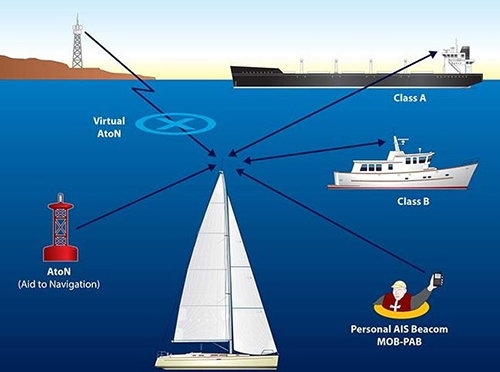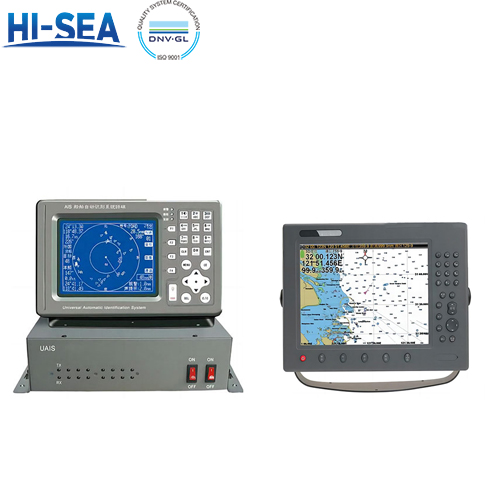
Differences between Class A AIS and Class B AIS
Overview
Communication Protocols
In AIS, a minute is referred to as a frame, divided into 2250 time slots, each time slot being 26.67 ms, capable of transmitting 256 bits of information. In general, a ship position report (dynamic information) occupies one time slot on the data link, while other types of messages may use more than one time slot depending on specific needs, but the maximum number of consecutive time slots used for each message does not exceed 5.
Class A AIS uses the SOTDMA protocol. According to self-organizing principles, AIS dynamically adjusts the allocation of time slots based on the load of the communication link in real-time to ensure the accurate determination of the start time of each time slot by all stations sharing a common time reference (GPS time). Each data transmission packet contains the time slots required for its own subsequent transmission to allow stations to establish a "time slot map" to avoid two stations using the same time slot for data transmission within the same range.
Class B AIS is based on the actual needs of small and medium-sized vessels, possessing basic functions of Class A AIS without excessively increasing the cost of small and medium-sized vessels or unduly affecting the original AIS network. There are two protocols for Class B AIS: SOTDMA and CSTDMA. Class B SOTDMA AIS communicates using the same protocol as Class A AIS, publishing and receiving information in the same network as Class A AIS without causing time slot conflicts with the original AIS, but increasing the network burden of the original AIS. Class B CSTDMA AIS uses listen-before-talk technology, and its time slot start time is based on Class A AIS or AIS base stations. It constantly listens on the AIS radio channel and only broadcasts messages when no other stations are transmitting data, aiming to release information while ensuring that the priority of SOTDMA transmission is not affected. Therefore, its transmission time does not exceed one time slot. Because it does not reserve time slots and uses only one time slot for transmission, and has very low network load, Class B AIS has become mainstream internationally. However, it should be noted that in areas where AIS monitoring of vessel approaches is close to saturation, the packet loss probability of Class B CSTDMA signals is relatively high.

Message Format
AIS has 27 message types, as detailed in ITU-RM.1371-4. This article focuses on the most commonly used static and dynamic data in AIS to illustrate the differences between Class A and Class B. Static data includes MMSI, ship name, ship type (including length and width), and positioning antenna position. Dynamic data includes ship position, world time, ground speed, course over ground, and turn rate. AIS needs to broadcast dynamically to the outside world and promptly obtain external AIS data. The transmission frequency of dynamic data is generally higher than that of static data.
Static data:
Class A AIS equipment periodically transmits standard Class A static reports with Message 5 functionality, with a report length of 424 bits, occupying 2 time slots.
Class B SOTDMA AIS equipment periodically transmits standard Class B equipment static reports with Message 19 functionality (Message 19 extends Message 18, the position report message of Class B AIS equipment, adding information such as ship type and size, which can be identified by other Class A AIS equipment). Because Message 19 occupies two time slots, the report length is 312 bits, and all Class B CSTDMA AIS equipment cannot use this message.
Class B CSTDMA AIS equipment transmits static AIS data reports through Message 24. Message 24 includes two parts, 24A and 24B. The length of the 24A report is 160 bits, and the length of the 24B report is 168 bits, each occupying one time slot. 24A is transmitted 1 minute before 24B. Because Message 24 is newly added, original Class A AIS equipment cannot recognize this message, resulting in some Class A AIS equipment ships unable to recognize ships equipped with Class B CSTDMA AIS equipment without software upgrades.
Dynamic data:
Class A AIS generally broadcasts its dynamic information through Messages 1, 2, and 3.
Class B AIS broadcasts its dynamic information through Message 18.
Reporting Rate
Static data: The static data of all AIS equipment is updated every 6 minutes or when data changes or when requested.
Dynamic data: In the case of vessel stationary and slow speed, the update time of dynamic data for both Class A and Class B AIS is within 3 minutes. When the vessel speed is slightly higher or the navigation environment changes, the update frequency of Class A AIS is higher than that of Class B AIS, especially for Class B CSTDMA AIS equipment, the update interval is 30 seconds when the speed exceeds 2 knots, and the ship position update speed is relatively slow. See the table below for details.
Class A | ||||||||
Class A | Lie at anchor/ ≤3kn | Lie at anchor/ ﹥3kn | 0-14kn | 0-14kn & change course | 14-23kn | 14-23kn & change course | ﹥23kn | ﹥23kn & change course |
Interval | 3min | 10s | 10s | 3s | 6s | 2s | 2s | 2s |
Class B (SOTDMA) | ||||
Class B (SOTDMA) | ≤2kn | 2-14kn | 14-23kn | ﹥23kn |
Interval | 3min | 30s | 15s | 5s |
Class B(CSTDMA) | ||
Class B(CSTDMA) | ≤2kn | ﹥2kn |
Interval | 3min | 30s |
Interacting with other AIS devices
Among the 27 message formats in the AIS protocol, Message 8 is a binary broadcast message format that allows AIS devices to interact with each other via short messages, capable of transmitting text information up to 936 bits in length. Both Class A AIS and Class B SOTDMA AIS devices can use Message 8 for external communication. However, Class B CSTDMA AIS devices are not allowed to engage in this type of communication.
Transmitting Power
According to the ITU-RM.1371 specification, the transmitting power for Class A AIS should be set between 12.5-25W. To prevent Class B SOTDMA AIS devices from having excessively high power, which could overload the AIS network, their transmitting power should be between 2-5W. Based on distance testing results from the IEC62287-1 standard, if Class B CSTDMA AIS devices need to communicate with Class A AIS devices within a range of 7 nautical miles and eliminate the degradation of Class A operations caused by the carrier listening mechanism, they would require a transmitting power of 2W.





